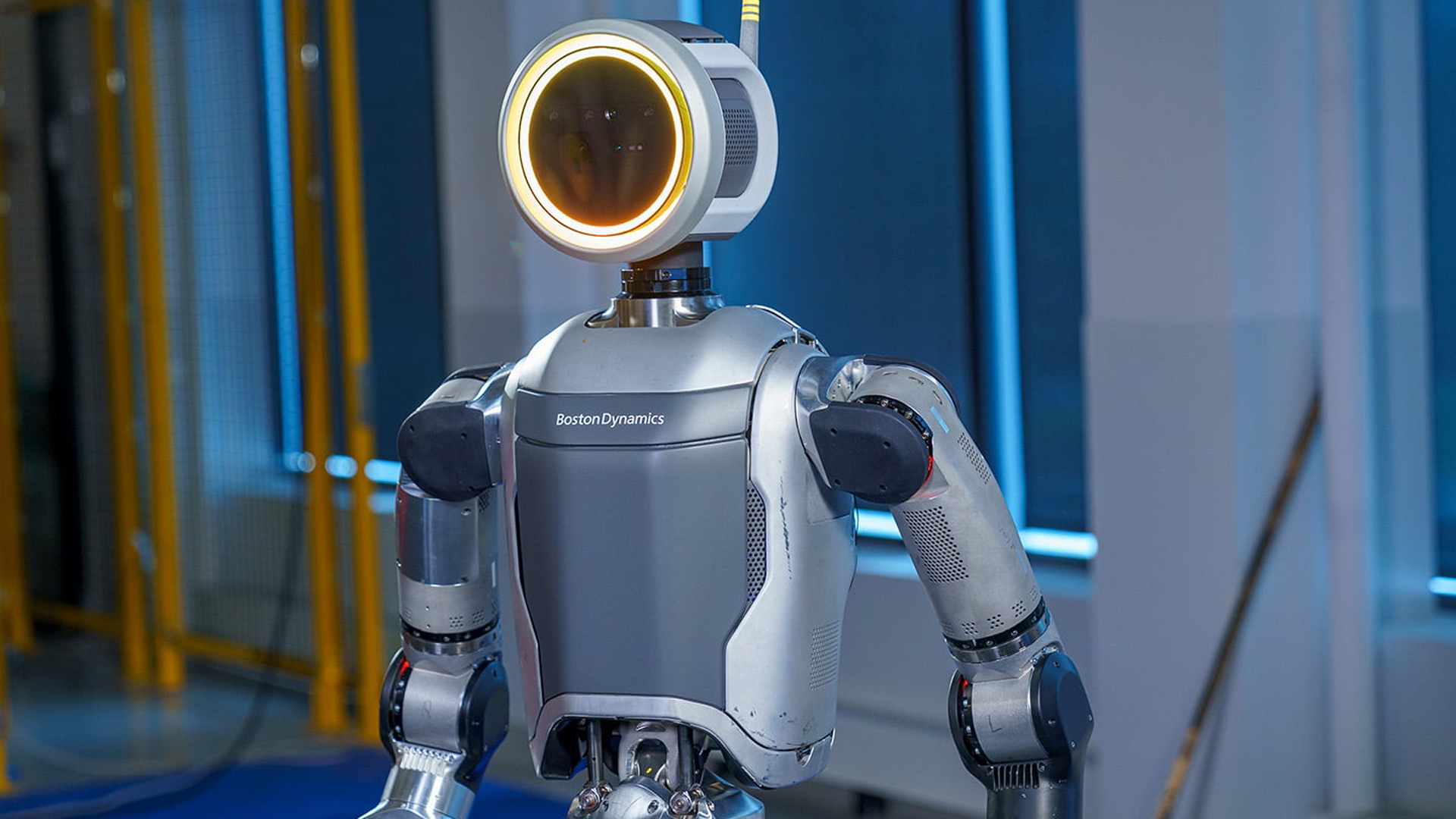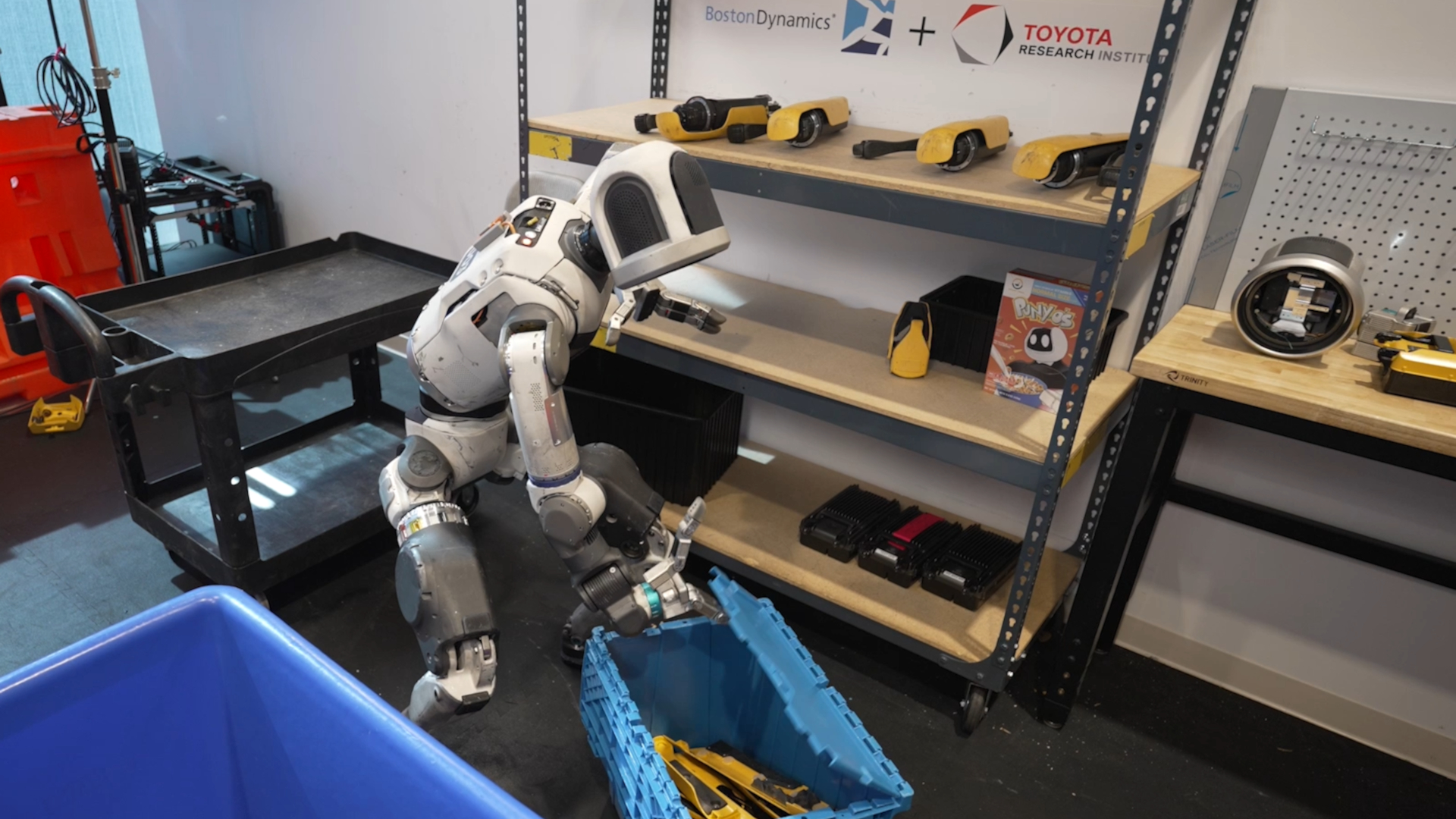Boston Dynamics' Atlas robot shows us how our future machine overlords could look
Thinking on the fly and moving freely? Robots are here for real


Quick Summary
The Boston Dynamics Atlas humanoid robot is now moving faster, more intelligently and adaptively than ever.
The latest example of Atlas uses AI to think on the fly and move appropriately – as shown in a new video online.
Boston Dynamics has been a name associated with the most advanced robots in terms of movements for a while. Think Big Dog, CyberDog 2 and now Atlas. And it's the latter that it's made significant strides with.
In the latest video showing off what Atlas can do, Boston Dynamics has revealed it can now use AI to think and move adaptively.
Yup, while previous videos of intricate movements were often sped up due to their slowness, this one is played in real-time. Not only that but there are even humans messing with the task to show just how adaptive Atlas can be on the fly.
That, or they want to taunt it to give the robot uprising a good excuse to deal with us pesky humans.
What can the Atlas robot do?
In the video below, we can see Atlas set the task of moving items from one place to another. The humans there undo some stages it achieves and you can see it, without missing a second, correct that and carry on unhindered.
The impressive part about this is that it is "thinking" for itself, adapting to circumstances and staying on task to achieve its goal.

iPhone
The bi-pedal bot can be seen squatting, leaning, reaching and grabbing, all in a smooth combination that keeps it working away at its task. How? This is the result of the Toyota Research Institute working with Boston Dynamics to kit Atlas out with a LBM, or Large Behaviour Model.
Get all the latest news, reviews, deals and buying guides on gorgeous tech, home and active products from the T3 experts
This means the humanoid robot is now able to use this "brain" that's been trained by huge datasets to carry out human actions. All that should help Atlas better understand, generate and adapt to human type behaviours for activities in the real world.
Boston Dynamics said: "By adopting LBMs, new capabilities that previously would have been laboriously hand-programmed can now be added quickly and without writing a single new line of code."
Representatives of the company go on to say that this shows how they are thinking about ways in which these robots could be helpful to people day-to-day. This, they say, could transform how we live and work.
This is not the first time we see the move towards putting AI-powered humanoid robots into homes. Just last week, the Figure robot was seen folding laundry and loading a washer with ease.
So while we have the first robot Olympics at one end of the range, at the other we may see robot helpers become a household addition akin to robot vacuum cleaners, sooner than we may have thought possible.
Luke is a freelance writer for T3 with over two decades of experience covering tech, science and health. Among many things, Luke writes about health tech, software and apps, VPNs, TV, audio, smart home, antivirus, broadband, smartphones and cars. In his free time, Luke climbs mountains, swims outside and contorts his body into silly positions while breathing as calmly as possible.
You must confirm your public display name before commenting
Please logout and then login again, you will then be prompted to enter your display name.

